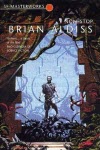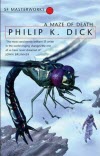The Next Generation of Generation Starships
The announcement by NASA in late September 2010 of the discovery of the first potentially habitable extrasolar planet, Gliese 581 g, was tremendously exciting for many reasons, but it raised an age-old question. Gliese 581 g is located about 20.3 light-years, or 1.3 million Astronomical Units (AUs), from Earth. How long would it take for us to get there?
The still-functioning probe Voyager 2 is currently departing the Solar System at a speed of roughly 3.3 AUs per year. It would therefore require about 390,000 years to make the trip. If, generously, we assume that within the next few generations we can construct human-faring spacecraft that travels 100 times faster than Voyager 2, we’re still looking at a 3,900-year-long journey. If a manned mission were launched at these speeds, the result would be Generation Ship (GS). Those who arrived at the destination would be the descendants, many times over, of the original crew.
In the real world that’s a daunting proposition. Aside from not knowing whether we could design such long-lasting biospheres1 and whether the human body could survive that long in space, there’s the enormity of the psychological challenge. Isaac Asimov once listed the GS as the most technologically feasible way of achieving interstellar travel, but also noted: “Objection: None, really, if people want to do it.”2
Whether people ever decide to pursue the GS in practice, we’re free to dream about it. In fact, to writers of speculative fiction there’s something irresistible about the possibilities of the GS. I’d like to offer a brief review the history of the GS in SF and, by examining a few recent examples, also provide my thoughts on why it continues to be a popular and relevant trope.
Muties of the Sky
“The Voyage that Lasted 600 Years” by Don Wilcox (1940) is generally credited with launching the GS sub-genre [e.g. Nicholls3]. It provides a dark view of successive generations over one-hundred-year snapshots, narrated by a passenger placed in suspended animation who wakes each century to record observations on the changes in the ship’s culture.
Widening our definition of the GS story a little, we find interesting forerunners to Wilcox. One of the oldest might be Mark Twain’s “Generation Iceberg” (1884), which satisfies the definition of a GS narrative in all important ways (and even has the word ‘Generation’ in its title!). Alas, it exists only in outline form in one of Twain’s notebooks4. There’s also Leslie Stone’s “Across the Void” (1931), which depicts a long interstellar voyage that includes childbirth but unfolds over a mere eight years5. Murray Leinster’s “Proxima Centauri” (1935) is another candidate. Once again, though, the time-span is comparatively short, only ten years6. Nat Schachner’s “Return of the Murians” (1936) features a true interstellar starship, but doesn’t qualify as a genuine GS story because it’s not from the point of view of the travelers. Predominant in pre-Wilcox tales is the
“… mobile planet or planetoid that is used for interstellar travel over many generations but it is usually of alien origin, other peoples visiting us. Such stories include J. Schlossel’s “Invaders from Outside” (1925), Ray Cummings’ “A Brave New World” (1928); Edmund Hamilton’s “The Sun Stealers” (1929). In the foreign literature there is Friedrich Freksa’s Druso (German 1931). Water Kateley’s “Room for the Superrace” (1932) could be mentioned.”sup>7
Another influential set of GS works that would provide a template for other writers is Robert Heinlein’s “Universe” (1941) and “Common Sense” (1941), published collectively as Orphans of the Sky (1963). Here we encounter several core themes: evolution and mutation over successive generations (the upper decks become reserved for the “muties”), and the discovery that the ship that represents the crew’s world is not in fact the whole universe.
 Other writers who have piloted post-Wilcox GSs between the 1940s and 1970s are Brian Aldiss, Arthur C. Clarke, Clifford Simak, John Brunner, Leigh Brackett, Fritz Leiber, Harry Harrison, Alexei Panshin, Samuel R. Delany, A. E. Van Vogt, Chad Oliver, Harlan Ellison, and Ben Bova. From these treatments we should perhaps single out Brian Aldiss’ Non-Stop (1958) [Purchase] for adding notable complexity to Heinlein’s ideas, especially the religious aspects. (For example, Aldiss replaces Christianity with a psychoanalysis-inspired belief system, with Consciousness taking the place of God and the Holy Trinity being exchanged for “Froyd, Yung and Bassit.” This allows Aldiss to comment on both religion and psychoanalysis without directly commenting on either. I leave it up to the Curious Reader to discover what takes the place of the Devil.)
Other writers who have piloted post-Wilcox GSs between the 1940s and 1970s are Brian Aldiss, Arthur C. Clarke, Clifford Simak, John Brunner, Leigh Brackett, Fritz Leiber, Harry Harrison, Alexei Panshin, Samuel R. Delany, A. E. Van Vogt, Chad Oliver, Harlan Ellison, and Ben Bova. From these treatments we should perhaps single out Brian Aldiss’ Non-Stop (1958) [Purchase] for adding notable complexity to Heinlein’s ideas, especially the religious aspects. (For example, Aldiss replaces Christianity with a psychoanalysis-inspired belief system, with Consciousness taking the place of God and the Holy Trinity being exchanged for “Froyd, Yung and Bassit.” This allows Aldiss to comment on both religion and psychoanalysis without directly commenting on either. I leave it up to the Curious Reader to discover what takes the place of the Devil.)
In the last several decades other critically-acclaimed SF authors who have penned GS stories of all lengths -– in at least three cases, over a span of multiple novels –- include Arthur C. Clarke in collaboration with Gentry Lee, Isaac Asimov, Frederik Pohl, Gene Wolfe, Joe Haldeman, Ken MacLeod, Ursula K. LeGuin, Frank M. Robinson, Kevin J. Anderson, Richard Paul Russo, Robert Reed, Stephen Baxter, Peter F. Hamilton and Elizabeth Bear. The GS has also been appropriated by various media franchises such as Star Trek and Halo. Though at least one critic has remarked that the GS has been “played out, … the real action is elsewhere”8 what we observe today is quite the opposite, as a brief look at some recent examples will show.
The works I’ll be considering are the novels Ark (2009) by Stephen Baxter [Purchase] and Journey Into Space by Toby Litt [Purchase], and the film Pandorum (2009). Before doing that, however, let’s try to summarize some of the characteristic elements of the GS story.
Per Ardua Ad Astra
Asimov’s comment about the GS places it in an interesting context. If the main obstacle to its adoption is a question of desire, then stories that use the GS will have to explain how this problem has been resolved. To some extent that means that they will naturally gravitate towards an exploration of what makes us humans tick.
In a way, the GS really is the perfect setting for an extended thought-experiment on the nature of humanity. Consider: an artificial, self-contained world in which a writer can isolate a group of characters and subject them to any number of dramatic pressures. It’s not surprising that these stories tend to emphasize sociology. Think of William Golding’s Lord of the Flies (1954) magnified by the lens of speculative fiction.
I mention Golding because, to be fair, the GS belongs to a broader family of stories that focus on the loss of our familiar world and culture. (They have been called, aptly enough, “deculturation” stories9). The GS provides an excellent example of deculturation, but there are plenty of other possibilities, such as “stories in which social groups are isolated from their parent society for long periods of time, including Robinsonades … and stories featuring ‘lost colonies’”10.
Any society that is closed-off in this manner is likely, with the passage of time, to evolve an unpredictable set of social norms and even new religious and mythical beliefs. As Brian Stableford has observed, “This notion [the GS] — a mordantly literal embodiment of the motto per ardua ad astra — was readily adaptable to the mythic motif of the extraterrestrial Ark … ”11.
Another term often used in connection with the GS is “conceptual breakthrough,” meaning essentially a change in the established way of interpreting the world of the story. This investigation into what comprises reality is one of SF’s favorite philosophical games. As long it continues to propel this line of inquiry, the GS is not going to become extinct anytime soon. The conceptual breakthrough and the GS go hand in hand. For example, it’s one of the tools Aldiss uses to great effect in Non-Stop, as a result of which, “the characters are finding that they don’t know where they are or who they are”12.
 A more abstract example (that has also received much academic attention) from the authors I’ve mentioned is Philip K. Dick’s A Maze of Death (1970) [Purchase]. As is often the case in the phildickian universe, objective reality itself is suspect and tends to break down. This novel emphasizes the subjective and allegorical. As one critic writes, “There is no journey, and no ‘outside’ to the lives of the marooned crew. There is amnesia and degeneration, but this in the context not of a history that might be reconstructed, as in earlier examples, but in the context of a pure allegory that has as it were taken over”13.
A more abstract example (that has also received much academic attention) from the authors I’ve mentioned is Philip K. Dick’s A Maze of Death (1970) [Purchase]. As is often the case in the phildickian universe, objective reality itself is suspect and tends to break down. This novel emphasizes the subjective and allegorical. As one critic writes, “There is no journey, and no ‘outside’ to the lives of the marooned crew. There is amnesia and degeneration, but this in the context not of a history that might be reconstructed, as in earlier examples, but in the context of a pure allegory that has as it were taken over”13.
This illuminates an important quality of the GS story. GS narratives have the potential to be as fragmentary as their protagonists’ search for identity. A cultural reason, then, why the GS endures in our literature is because it embodies the fragmentation — or spirit of crisis — of our society. The GS is a perfect vessel for writers to explore the meaning of identity amidst the chaos of the world. This quality guarantees the GS’s longevity.
And just as the GS belongs to a wider family of thematically-like stories, it also, in turn, tends to inhabit a larger genre sub-grouping: space opera. The GS’s ongoing success is therefore, at least in part, the direct result of the recent “rebirth” of space opera in general.
Process, Purpose and Mood
 With all this in mind, let us return to the three examples I mentioned at the beginning: Ark, Journey Into Space and Pandorum. These works use radically different storytelling techniques to create disparate effects.
With all this in mind, let us return to the three examples I mentioned at the beginning: Ark, Journey Into Space and Pandorum. These works use radically different storytelling techniques to create disparate effects.
Baxter’s reputation is largely within genre. His novel is conservative in form but rigorously extrapolated and elegantly structured. (Ark concludes the story initiated in Flood [2008] but can be enjoyed as a standalone). Baxter’s story is fundamentally an exercise in hyper-realism applied to highly speculative notions such as sub-oceanic oceans, warp drive and the GS in question. Baxter provides immense amounts of geographical, scientific and psychological detail, and unfolds his story from an omniscient point of view that follows literally generations of characters through a myriad countries (and planets) over a combined span of sixty-five years. Ark is epic.
 In contrast, Litt’s success lies largely outside genre. Journey Into Space doesn’t spend a lot of time painting a detailed picture of the future. It actually eschews many space opera conventions, and that’s part of its appeal. Unlike Baxter, Litt offers a more contemplative perspective and achieves a sustained poetic tone. The story’s point of view latches onto certain characters and crosses over into their interior lives as needed, externalizing their mental landscapes through metaphor and myth. (There’s even an extended passage with no characters.) In direct opposition to Ark, Journey into Space is intimate.
In contrast, Litt’s success lies largely outside genre. Journey Into Space doesn’t spend a lot of time painting a detailed picture of the future. It actually eschews many space opera conventions, and that’s part of its appeal. Unlike Baxter, Litt offers a more contemplative perspective and achieves a sustained poetic tone. The story’s point of view latches onto certain characters and crosses over into their interior lives as needed, externalizing their mental landscapes through metaphor and myth. (There’s even an extended passage with no characters.) In direct opposition to Ark, Journey into Space is intimate.
And whereas Baxter uses his GS to explore one of his most recurrent themes — evolution in the face of catastrophe — Litt’s GS serves a different purpose: to examine the potential catastrophe of humanity losing its certainty about the desirability of its continued existence.
Ark quantifies the problem of physical jeopardy to humanity; it focuses on process. Journey Into Space, on the other hand, asks existential questions; it delves into purpose.
Pandorum, working in yet a third vein, emphasizes horror elements as much as its SFnal content14. It uses stylish production effects, violent action sequences and a dark, paranoid atmosphere to create a mood of dread and claustrophobia. Pandorum, like other works we’ve mentioned, also asks what is real. It forces its characters to repeatedly adapt their understanding of the history of the ship Elysium, an inquiry that once again ends in a massive conceptual breakthrough.
From this we see that the current generation of GS stories shares much with its ancestors. And yet it is not homogenous, but continues to be molded to the specific needs of its creators. This adaptability is key. In combination with the other traits we’ve identified, it reveals why the GS remains a stimulating conceit, one that that will continue to be with us for the foreseeable future.
1. For some discussion of the difficulties of creating biospheres on space craft see Sarah Goslee’s article in Clarkesworld #46.
2. Asimov, Isaac. “The Longest Voyage”. Introduction to Starships. Edited by Isaac Asimov, Martin Harry Greenberg and Charles G. Waugh. New York: Fawcett Crest, 1983.
3. Nicholls, Peter. “Generation Starships”, The Multimedia Encyclopedia of Science Fiction. Danbury, CT: Grolier, CD-ROM, 1995.
4. See Appendix C in Twain, Mark. Tales of Wonder ed. Ketterer, David. Lincoln, Nebraska: University of Nebraska Press, 2003.
5. Bleiler, Everett F. Private correspondence, October-November 2009. For more detail on the stories cited see the following two reference books:
———. Science Fiction: The Early Years. Kent and London: The Kent State University Press, 1990.
———. Science Fiction: The Gernsback Years. Kent and London: The Kent State University Press, 1998.
6. Bleiler, op cit.
7. Bleiler, op cit.
8. Palmer, Christopher. “Generation starships and after: ‘never anywhere to go but in’?” Extrapolation, Fall, 2003.
9. Shippey, Tom. “A Modern View of Science Fiction”. Beyond this Horizon: An Anthology of Science Fiction and Science Fact ed. by Christopher, Carrell. Sunderland: Ceolfrith Press, 1973.
10. Stableford, Brian. “Sociology”. Science Fact and Science Fiction: An Encyclopedia. New York and London: Routledge, 2006.
11. Stableford, Brian. “Space Travel”. Science Fact and Science Fiction: An Encyclopedia. New York and London: Routledge, 2006.
12. Palmer, op cit.
13. Palmer, op cit.
14. Westfahl, Gary. “In the Midst of Pandemonium, Profundity?” A Review of Pandorum. Locus Online, Friday, October 2, 2009.
Great stuff!
I haven’t seen Pandorum, but it sounds a bit like Event Horizon, or is that a stretch?
R.
Glad you liked the piece 🙂
Not a stretch by any means; in fact, the comparison has been made in several places online, and the films compared side-by-side in reviews. Paul W.S. Anderson directed Event Horizon and also produced Pandorum, so certain similarities were perhaps inevitable….